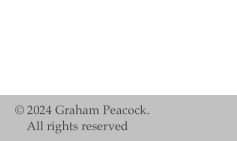 |
 |
||||
A Dozen New New Painters and a Sculptor Too.Article by William Zimmer, ‘A Dozen New New Painters and a Sculptor Too’ GROUP of artists calling themselves the New New painters has seen the future and it is sticky and arrives in huge drums. These painters have embraced acrylic gel, a thick plastic medium that can be thrown at a canvas or applied in more decorous ways. It is versatile in terms of color: in the drum the gel is white but a range of powered pigments can be added to it, including iridescent, glittery ones. An exhibition featuring 11 New New Painters plus a sympathetic sculptor is at Fine Art 2000, a capacious former commercial showroom -in Stamford. It should not be surprising that many of the paintings are outsized. the better to match the =magnitude of their making. But many are smaller, and jewel=like. '„The work of no two of the painters looks alike, and viewers begin to .recognize signature effects."New "New New" is in part an acknowl?edgement of and homage to the New York School, which in the 1950's and ,early 60's was synonymous with Ab?stract Expressionism. The bravura gestures of the older generation pale in comparison with what the thick gel permits. But the real forebears of the painters in this show are the highly formal Color Field painters like Kenneth Noland and Jules Olitski for whom color and space were coterminous. Accompanying the show is an impressive catalogue with essays by the prominent critics Donald Kuspit, who sees the erotic possibilities of the gel medium, and Arlene Raven, . who associates this group with the Hudson River School and its sense of historic mission. Abstract painters primarily concerned with color have tended to live in New England, although a leading historian who has championed this art, Kenworth Moffett, recently became head of the Fort Lauderdale Museum of Art. These cascades of color should play well in Florida. A few times in the catalogue it is noted that Lucy Baker is the only one of the group who retains vestiges of the figure. Viewers might see echoes of the extremely simplified figures of Matisse in her work. Their presence is hinted at in curvaceous swirls or blobs, and in her mainly horizontal paintings; in "Electric Landscape No. I," the figures exist in a pastoral landscape setting often accompanied by a sparkling moon. In contrast to Ms. Baker's languidness is the dense amalgamation of different kinds of strokes and densities of get achieved by Irene Neal. Ms. Neal favors amorphous formats that resemble liquid drops, and often she creates a sheen like that of semiprecious stones. More prosaically the compacted look of her style might also recall one of John Chamberlain's crushed automobiles. Although Ms. Baker's paintings are put forward as the only ones alluding to the figure, it is easy to read Ms. Neal's "Green Day to Laughter" at a head with a prominent open mouth positioned where -it should be. Initially Graham Peacock's work might' be mistaken for Ms. Neal's, but his aim is an organic look. In his catalogue statement he likens his effects to the opening of the earth's surface.It's hard to see the Baker, Neal or Peacock throwing paint That is left to someone like Steven Brent who also employs pendant shapes, though his are more symmetrical than Ms Neal's. His surfaces are corrugated or scalloped, and the undulation remains visible after all the gel is lobbed onto them. Much of his gel is pearlescent, and the texture of both painting surface and gel combine t suggest sea shells. Patterns of ridges are also a speciality of Roy Lerner. The catalogue mentions that he lives in Arizona, so with him there might be an influence from desert formations. Joseph Drappel's ridges are close-set like those of long playing records and the major shapes containing these grooves are suave arcs that catchlight His titles (like "Condition of forms respect interior boundaries. Life") also have a cool philosophical -His paintings point up the relative tone. Ridges or waves are also com- nature of the medium. Although Mr. Webster makes work that might look much the same made with another kind of paint, he says in his artist's statement that gel allows a "greater range of experimentation." SUNDAY, DECEMBER 29, 1996 The discrete forms in John Gittens's paintings might have been squeezed out of a giant toothpaste tube, but they sit atop parfaits of blending color. The acrobatic energy of the linear blobs might also summon up Matisse. The most subdued of the dozen is Ann Low, who is looking for the coexistence of "sometimes harsh textures" with "finely applied colors" mon in Marjorie Minkin's paintings. It's often a case of plastic meeting plastic, for frequently she puts gel on Lexan, a clear polycarbonate. While many of the artists obviously enjoy the visceral effects of different colors and thicknesses of gel running into each other, a couple of them make emphatically discrete marks. Out of thick, agglomerated surfaces Bruce Piermarini digs out fat tench-like linear forms that are also very pliant. They squiggle and bend mostly in symmetrical formation. The matte quality of Jerald Webster's paint might make viewers called acrylic gee.overall surfaces that tends toward being monochromatic. But fissures in them reveal relatively bright colors. In keeping with the large ambitions of the group she is recreating expansive forms, like the surface of the earth or the sea. The Color Field painters had in their number the sculptor Anthony Caro*; this group has Tom Fertig who makes handsome assemblage pieces out of aluminum and stainless steel Their surfaces might shine like gel, but Mr. Fertig's work in this overwhelming company is, to paraphrase Ad Reinhardt, what viewers bump into when they stand back to look at a New New painting. "New New Painting" is at Fine Art 2000 in Stamford through April. |
|||||